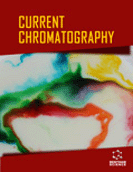Abstract
Background: The disadvantages of the classical approach used to characterize column performance in liquid chromatography, based on the observation of Van Deemter plots, are the need of measuring the extra-column variance, the use of data from only one compound eluted with a single mobile phase, which limits the conclusions of the approach, and the uncertainty arising from the handling of position and variance of chromatographic peaks to obtain the theoretical plate height.
Objective: In this work, a comprehensive study of the factors affecting the uncertainty of the chromatographic data used to build Van Deemter plots is carried out, and three complementary approaches are proposed to avoid the described disadvantages.
Method: One of the approaches is based on the direct treatment of the peak variances of several probe compounds according to a linear relationship of the variance with the squared retention volume, which includes the extra-column variance as a fitting parameter. In a second approach, the peak variance is fitted, for each probe compound, against the flow rate, and the model parameters are further related to the retention factors for the set of compounds. The third approach is based on the combination of both above approaches, and allows the data treatment in a single step.
Results: The three approaches were applied with good results to the characterization of three C18 columns (Zorbax Eclipse XDB, Spherisorb and Chromolith SpeedROD), using a set of five sulphonamides as probe compounds. In all cases, the prediction errors for the variance were highly satisfactory, being in the 2-4% range.
Conclusion: The three approaches are complementary, and allow a complete visualization of the chromatographic performance, giving information on how the retention factor affects the A, B and C parameters in the Van Deemter equation.
Keywords: Column characterization, data treatment, dispersion parameters, extra column variance, liquid chromatography, peak profile, van deemter plots.
 92
92 1
1

















